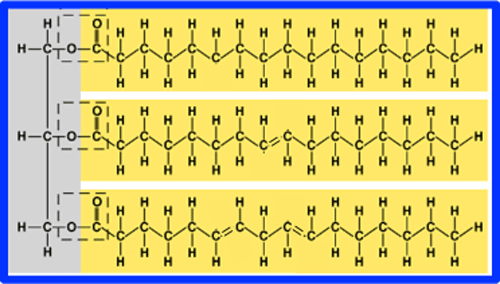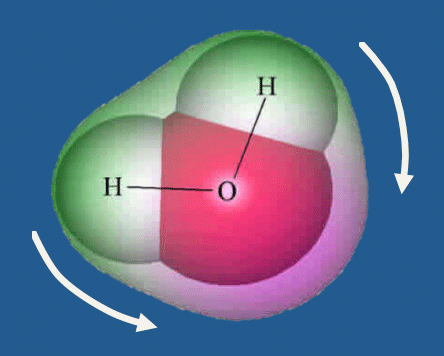The chemical structures of water and fat are unique, so we would naturally expect their magnetic properties to differ. Water, of course, is a small, rapidly rotating molecule, with a polar character due to its electronegative oxygen atom. Fat, on the other hand, exists in tissues primarily as long chain triglycerides. These are bulky molecules that move slowly, and most of their hydrogen atoms are nestled in aliphatic side chains among relatively electroneutral carbon atoms.
These molecular structures give rise to two key differences in the magnetic properties of water and fat:
- The T1 values for fat are much shorter than those of water
- The hydrogen protons of water resonate slightly faster than those of fat. This difference in resonance frequency is known as the water-fat chemical shift.
In most of the human body water and fat molecules reside in separate anatomic compartments and can be allowed to pleasantly coexist in the MR image. Sometimes, however, we may wish to suppress the signal from fat because it interferes with the detection of pathology or contrast enhancement. In a small minority of cases we may actually wish to suppress the signal from water to allow fat to be characterized or quantified.
A large number of methods have been developed to suppress, augment, or separate water and fat signals for MR imaging and spectroscopy. These techniques accomplish their goal by exploiting differences in T1, resonant frequency, or both.
A large number of methods have been developed to suppress, augment, or separate water and fat signals for MR imaging and spectroscopy. These techniques accomplish their goal by exploiting differences in T1, resonant frequency, or both.
Advanced Discussion (show/hide)»
Although for decades just considered a storage site, most modern physiologists now consider adipose tissue to be a major endocrine "organ". Adipose tissues produce hormones (leptin, resistin, and TNF-α) and help regulate levels of blood sugar, cholesterol, and triglycerides.
The structure and function of adipose tissue varies by location, including subcutaneous white and brown fat, visceral fat, marrow fat, and fat within organs. All adipose tissue is not the same. Although mostly composed of triglycerides, adipose tissue also contains variable amounts of water, cells, blood vessels, and connective tissues. Even if a perfect "fat sat" pulse were devised, we would not expect it to suppress these other tissues.
References
Ren J, Dimitrov I, Sherry AD, Malloy CR. Composition of adipose tissue and marrow fat in humans by ¹H NMR at 7 Tesla. J Lipid Res 2008; 49:2055-2062.
Ren J, Dimitrov I, Sherry AD, Malloy CR. Composition of adipose tissue and marrow fat in humans by ¹H NMR at 7 Tesla. J Lipid Res 2008; 49:2055-2062.


